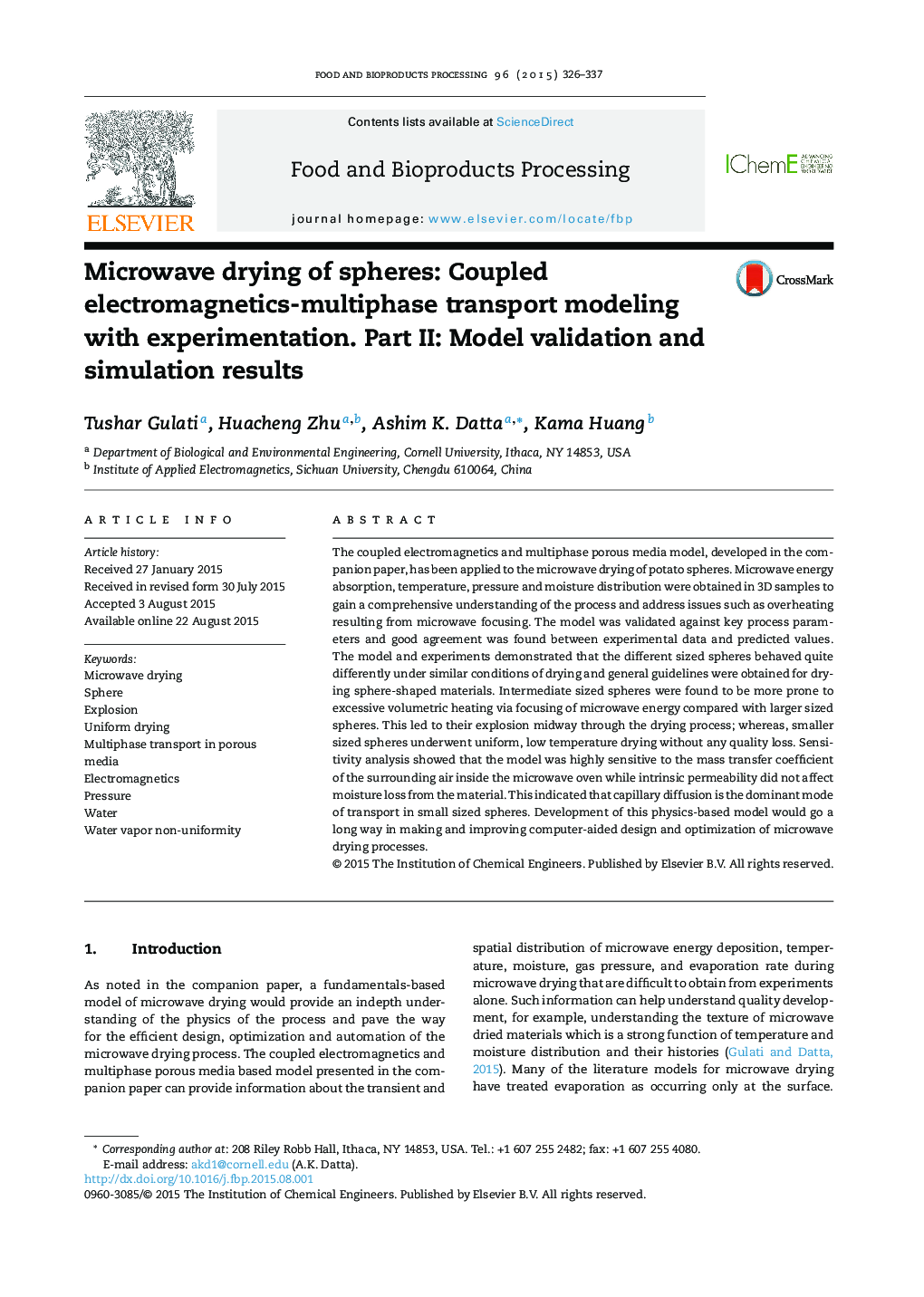| Article ID | Journal | Published Year | Pages | File Type |
|---|---|---|---|---|
| 18849 | Food and Bioproducts Processing | 2015 | 12 Pages |
•Intermediate sized spheres show significant microwave focusing.•This led to their explosion hallway into their drying process.•Smaller sized spheres undergo uniform and low temperature drying.•Capillary diffusion dominates in smaller sized samples.
The coupled electromagnetics and multiphase porous media model, developed in the companion paper, has been applied to the microwave drying of potato spheres. Microwave energy absorption, temperature, pressure and moisture distribution were obtained in 3D samples to gain a comprehensive understanding of the process and address issues such as overheating resulting from microwave focusing. The model was validated against key process parameters and good agreement was found between experimental data and predicted values. The model and experiments demonstrated that the different sized spheres behaved quite differently under similar conditions of drying and general guidelines were obtained for drying sphere-shaped materials. Intermediate sized spheres were found to be more prone to excessive volumetric heating via focusing of microwave energy compared with larger sized spheres. This led to their explosion midway through the drying process; whereas, smaller sized spheres underwent uniform, low temperature drying without any quality loss. Sensitivity analysis showed that the model was highly sensitive to the mass transfer coefficient of the surrounding air inside the microwave oven while intrinsic permeability did not affect moisture loss from the material. This indicated that capillary diffusion is the dominant mode of transport in small sized spheres. Development of this physics-based model would go a long way in making and improving computer-aided design and optimization of microwave drying processes.
